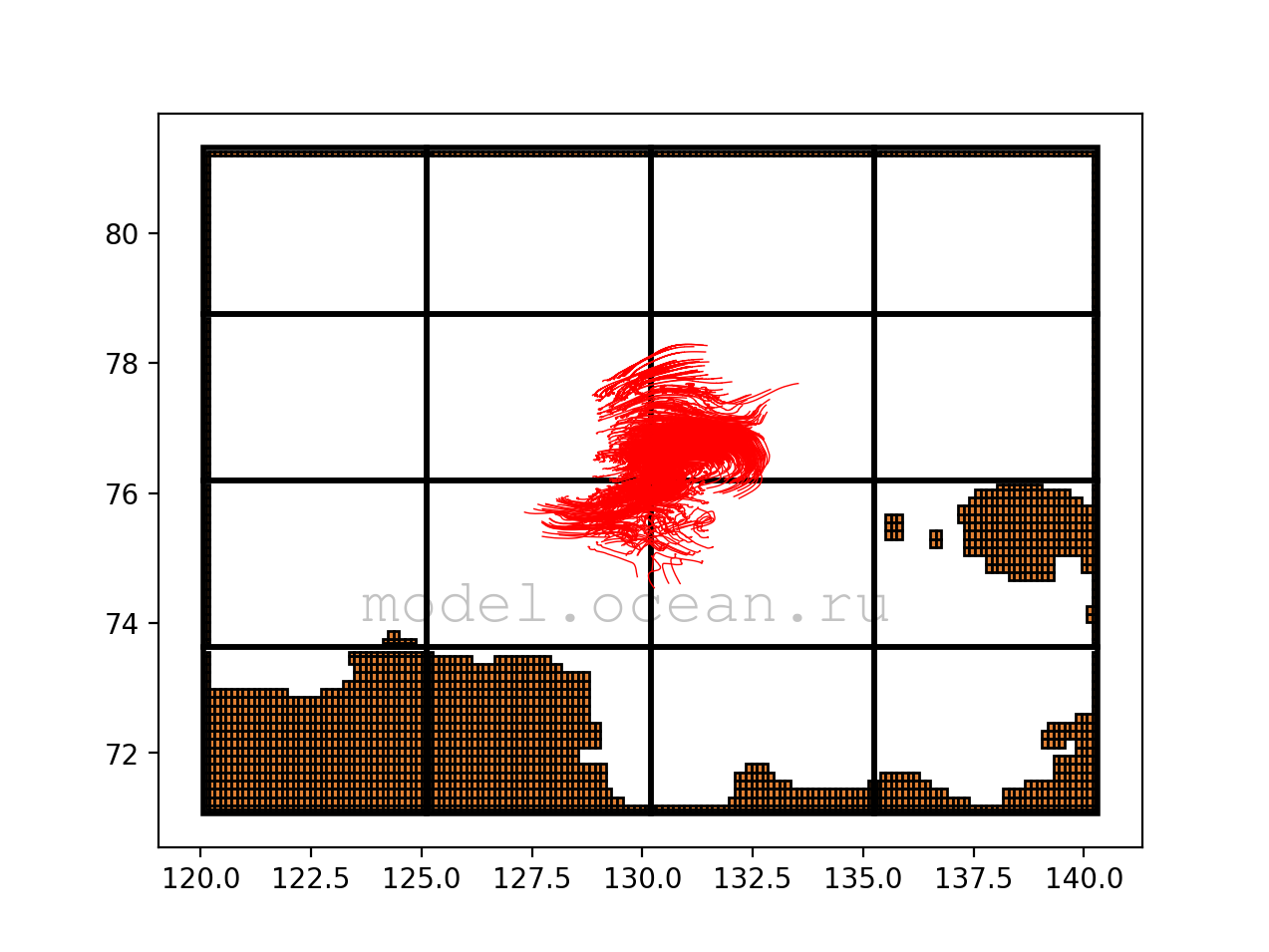Lagrange tracer transport model
Lagrangian transport models are an effective tool in the researching of processes occurring in the Oceans. The approach which tracks the movement of individual particles gives a lot of opportunities to obtain qualitatively new results in comparison with the Eulerian approach. Indeed, the solution of the substance motion problem by calculating the velocity of its movement in the nodes of the grid imposes a number of restrictions. For example, if the substance is a certain amount of radionuclides, the process of describing the decay and/or transformation into other types of radioactive particles in this approach is difficult. On the contrary, the Lagrangian approach offers a simple and transparent solution to this problem. Also, the Lagrangian approach allows us to take into account some specific properties of particles that can affect the process of their movement in the flow of currents.
With the growth of computing power for Lagrange models, a new stage of development began. If a couple of decades ago the use of this approach in solving certain problems was almost impossible because of the large amount of required calculations, now it is quite achievable. At the same time, it should be noted that millions of particles can already be used in the calculations during the experiments which gives results of a high degree of accuracy.
Nowadays when we talk about Lagrangian transport models we often mean the so-called offline models. Offline models make calculations based on the output data obtained as a result of a numerical experiment on a model of the Ocean General Circulation Models (OGCM). In spite of some advantages of offline models, a number of disadvantages makes them less competitive compared to online models, in particular the inevitable averaging of the data obtained from the model causes a significant loss of accuracy of the results. Online models perform calculations in conjunction with the OGCM and use a set of dynamically updated data at each time step that is necessary to find the trajectories of particles. The presented development is referred to the class of online-models and has a fairly extensive functionality, in particular, the solution of such problems as the description of radioactive decay of radionuclide particles, modeling the deposition of particles in the bottom layer and the illustration of the diffusion effect on the particle trajectory.
With the growth of computing power for Lagrange models, a new stage of development began. If a couple of decades ago the use of this approach in solving certain problems was almost impossible because of the large amount of required calculations, now it is quite achievable. At the same time, it should be noted that millions of particles can already be used in the calculations during the experiments which gives results of a high degree of accuracy.
Nowadays when we talk about Lagrangian transport models we often mean the so-called offline models. Offline models make calculations based on the output data obtained as a result of a numerical experiment on a model of the Ocean General Circulation Models (OGCM). In spite of some advantages of offline models, a number of disadvantages makes them less competitive compared to online models, in particular the inevitable averaging of the data obtained from the model causes a significant loss of accuracy of the results. Online models perform calculations in conjunction with the OGCM and use a set of dynamically updated data at each time step that is necessary to find the trajectories of particles. The presented development is referred to the class of online-models and has a fairly extensive functionality, in particular, the solution of such problems as the description of radioactive decay of radionuclide particles, modeling the deposition of particles in the bottom layer and the illustration of the diffusion effect on the particle trajectory.

